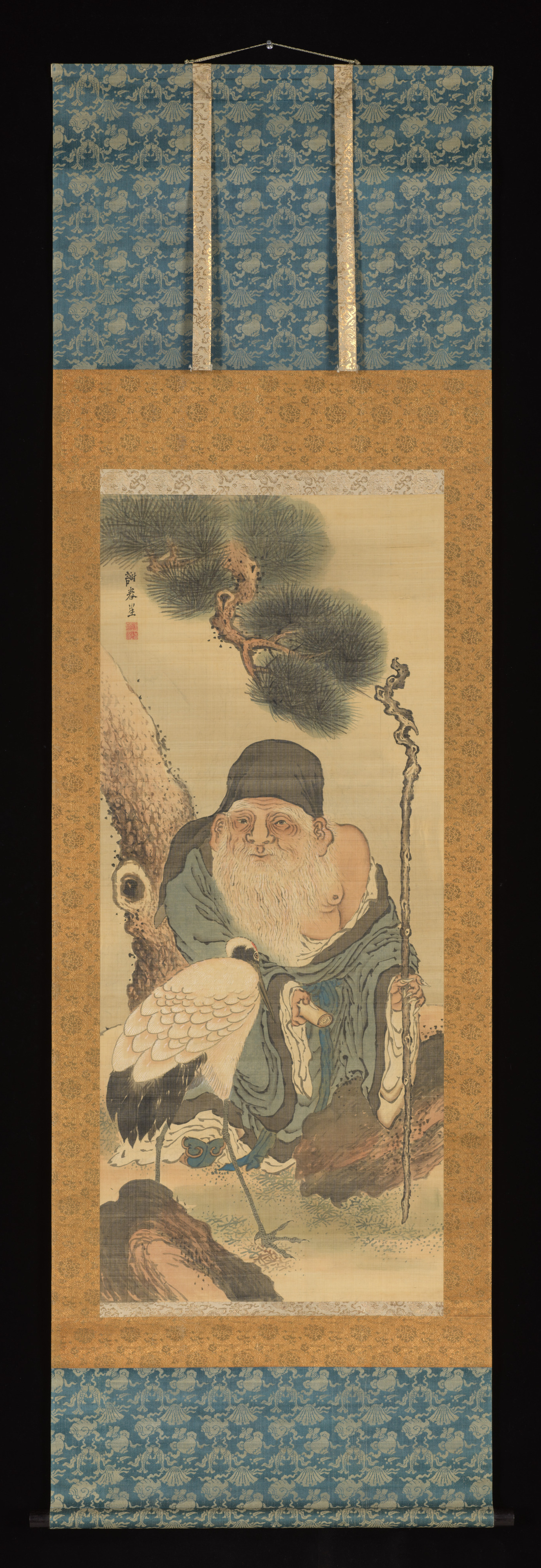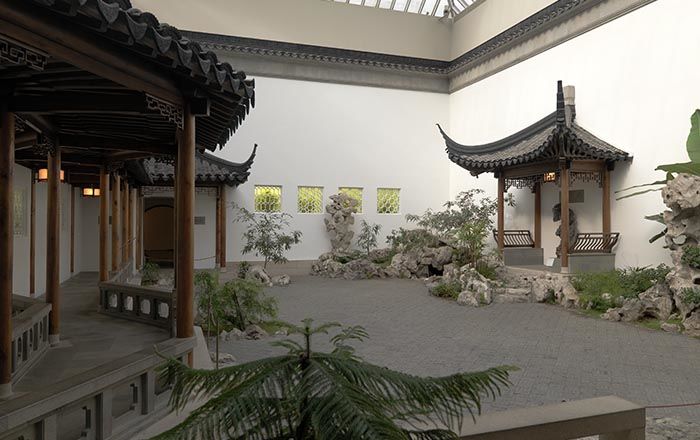Jurōjin
Yosa Buson Japanese
Not on view
Jurōjin, the Chinese Daoist immortal of longevity revered as one of Japan’s Seven Gods of Good Fortune (Shichifukujin), is depicted with his traditional attributes: a staff, a scroll, and his distinctive flowing white beard. Here, his Daoist robe slips casually from his shoulders, embodying the carefree demeanor of an enlightened sage amid nature. A crane and a pine tree, both symbols of longevity, complete this auspicious composition.
In the 1760s, Yosa Buson explored a wide range of subjects and styles of painting, establishing himself as a poet-painter in the capital Kyoto while also traveling frequently to Sanuki, where he produced many works. The delicate silk surface comes alive through his expert handling of color transitions and varied brushstrokes, ranging from the precise details of the crane to the rugged, creased folds of the robe. The layered, tactile depiction of rocks became a signature feature of his painting during this period, also exemplified in works such as Hanshan and Shide (2022.432.16a, b). The painting’s box bears an inscription by Go Shun (1752–1811), Buson’s student, who later authenticated many of his works (see 2023.583.21).
This image cannot be enlarged, viewed at full screen, or downloaded.
This artwork is meant to be viewed from right to left. Scroll left to view more.



